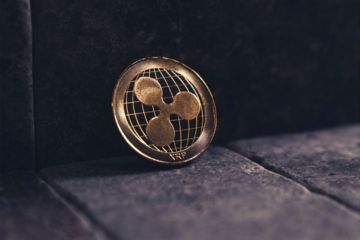XRP is predestined as a neutral bridge asset between CDBCs
In a new blog post entitled “Interoperability Will Determine CBDC Winners and Losers”, Ripple discussed the need for a networked system of Central Bank Digital Currencies (CBDCs). As the San Francisco-based company explained, the emergence of the COVID-19 pandemic has encouraged the use of contactless payments instead of cash.
The pandemic has changed the perspective of central banks around the world on issuing digital central bank currencies. According to Ripple, for CBDCs it is now a question of when, not whether. On the other hand, central banks’ positions on digital assets in general have also shifted, according to James Wallis, Vice President Global Sales Strategy & Operations at Ripple:
Governments that once viewed digital assets as a threat, now see how companies like Ripple are working closely with traditional financial institutions to develop efficient, innovative global payment solutions that directly benefit businesses and individuals.
While countries like China are expected to go into production with their CDBCs this year and focus on domestic use cases, a world of CDBCs will require networking as a result of the global economy, Wallis said:
While focusing on domestic use cases is understandable for individual countries, we live in an increasingly interconnected global economy. It will be critical to bridge the gaps between the various CBDC initiatives with existing payment systems as well as other digital currencies to ensure they are successful on a global scale.
According to Ripple, the key is that every system must contain core functions that allow it to work seamlessly with other payment systems. In this sense, open protocols and standards must be created, which, according to Wallis, can only be developed in partnership with private actors such as payment service providers, financial institutions and financial companies in order to achieve interoperability.
RippleNet is predestined to create a “network-of-networks” that will significantly increase the benefits of individual CBDCs. Specifically, Ripple sees “neutral bridge assets” as the solution to “enable a smooth exchange of values between different CBDCs without each one having to solve the liquidity problems associated with cross-border transactions”.
This is where On-Demand Liquidity comes in, which “allows financial institutions to transact in real-time across multiple global markets using the digital asset XRP and such a solution can also support the direct exchange of CBDCs”. Commenting on the benefits of XRP, Wallis added:
XRP is faster, less costly and more scalable than any other digital asset, making it the ideal instrument in bridging two different currencies quickly and efficiently. Using a neutral and efficient digital asset like XRP also reduces the hegemonic influences of the most powerful nations and helps level the playing field in the international trade’s payment system.
However, it is crucial that each “new CBDC is designed with interoperability in mind, using the kind of open standards and protocols that have been so successful in the globalization of information via the internet,” Wallis said.
It is worth noting that Ripple has been in contact with numerous central banks in the past. For example, Ripple met with the Central Bank of Cambodia in mid-June. In May, Ripple had held a meeting with the Central Bank of Brazil to discuss “institutional matters”. However, no details of what specific issues were discussed were disclosed.
Source: crypto-news-flash.com


